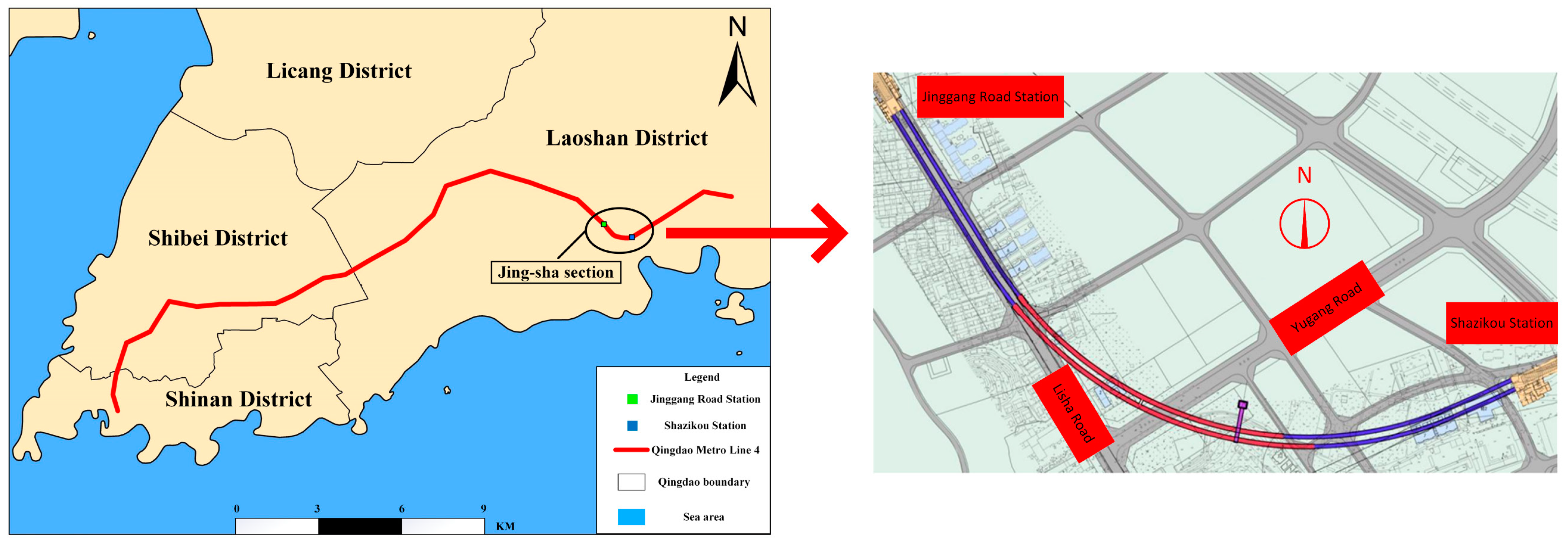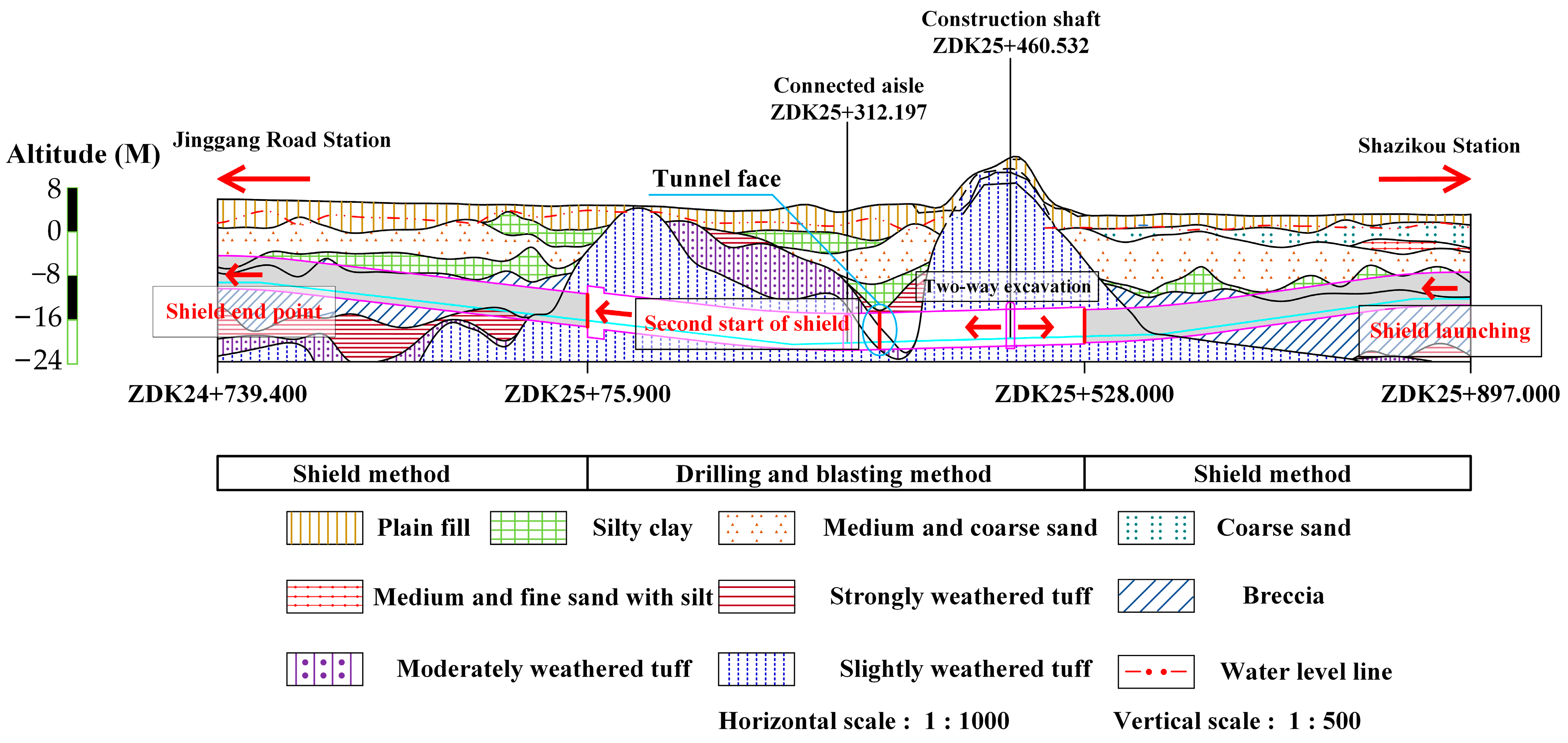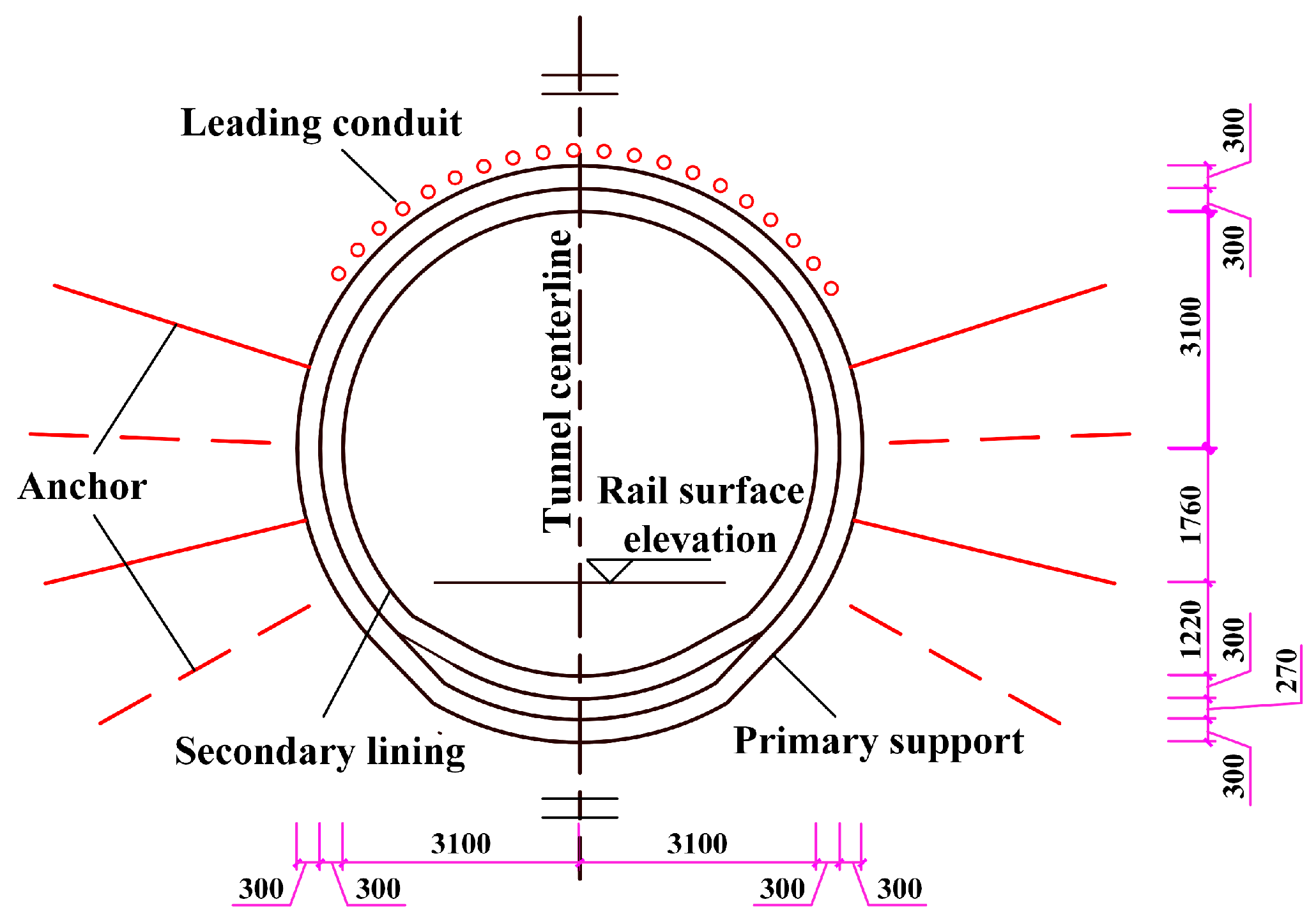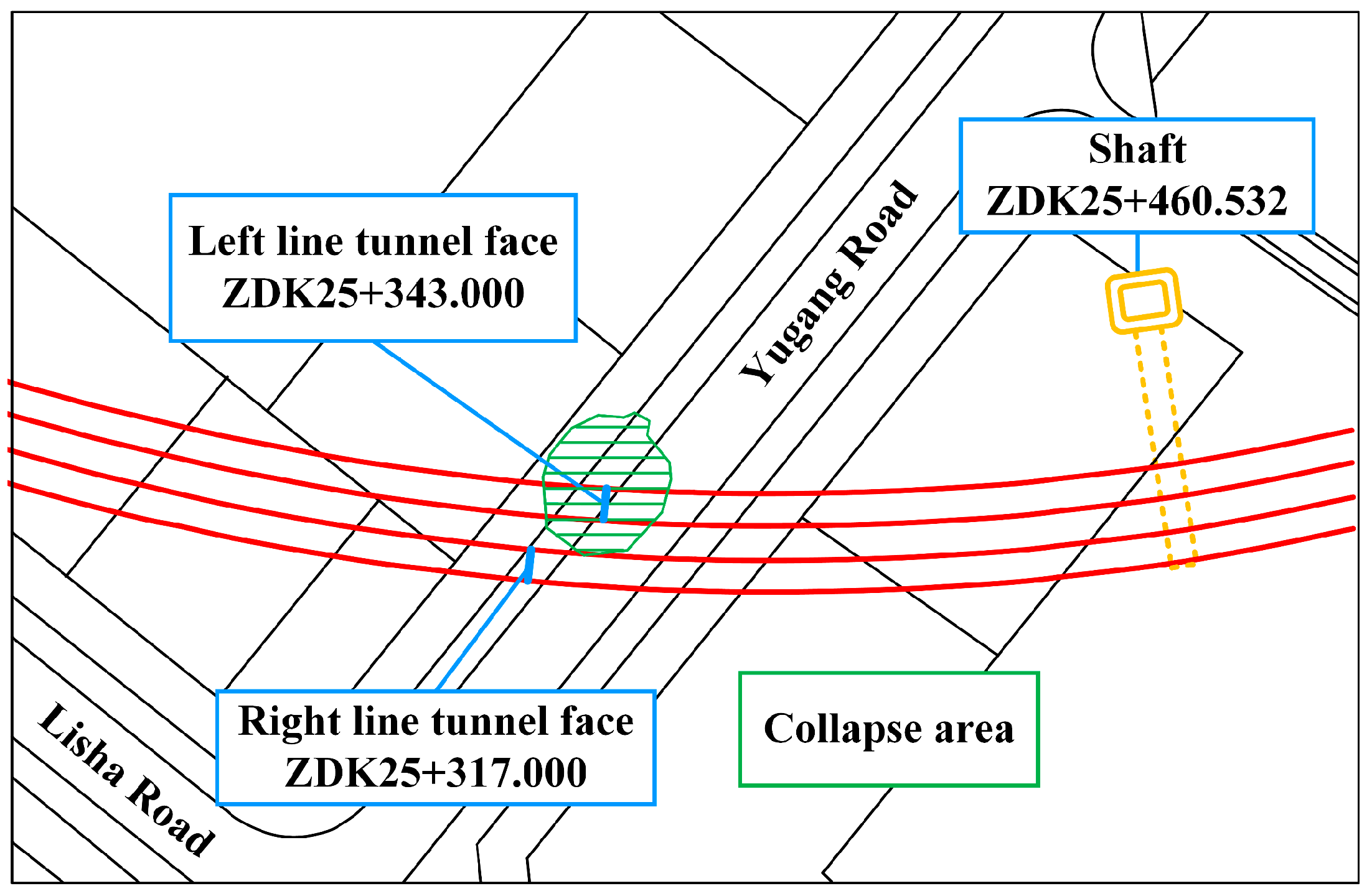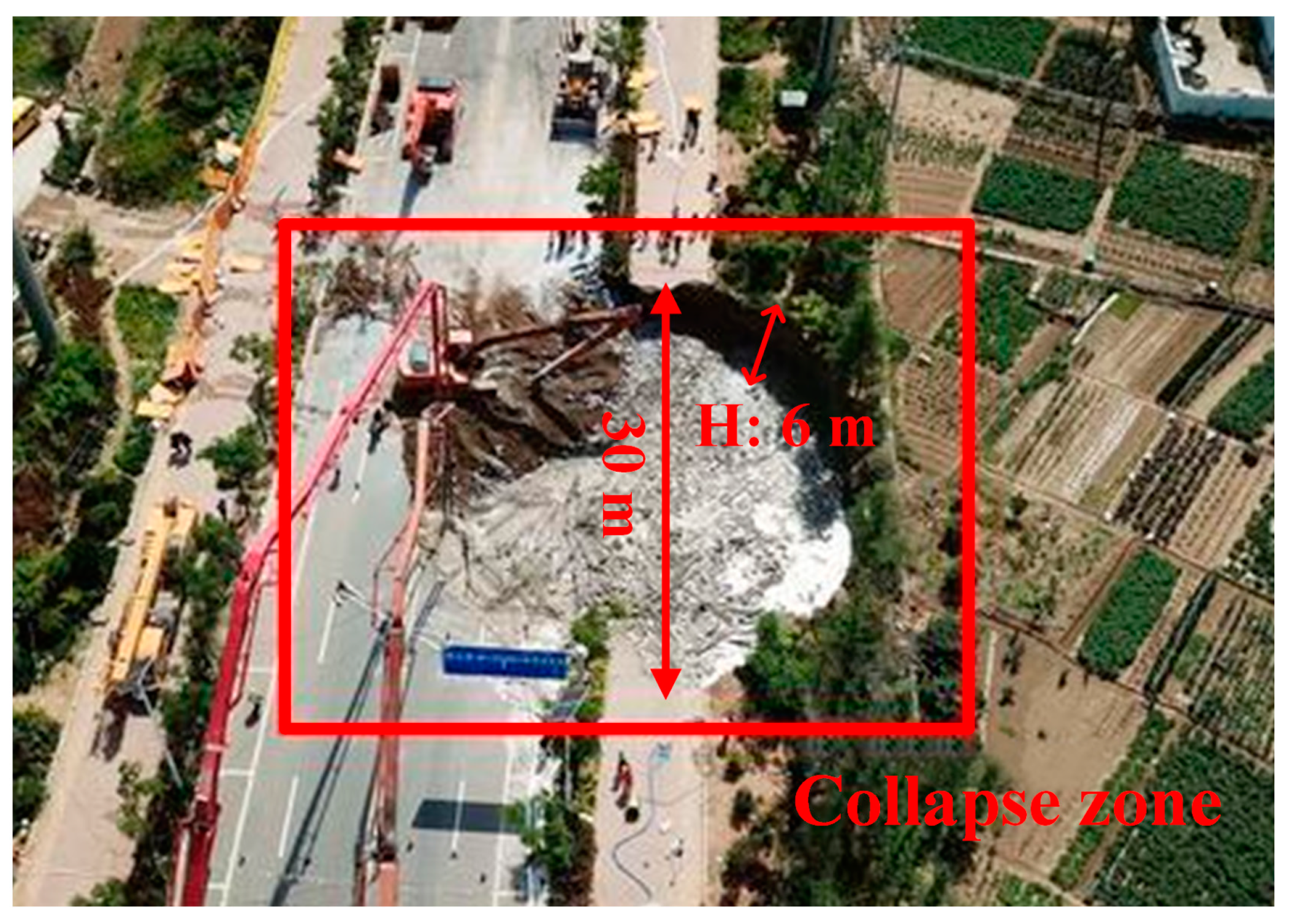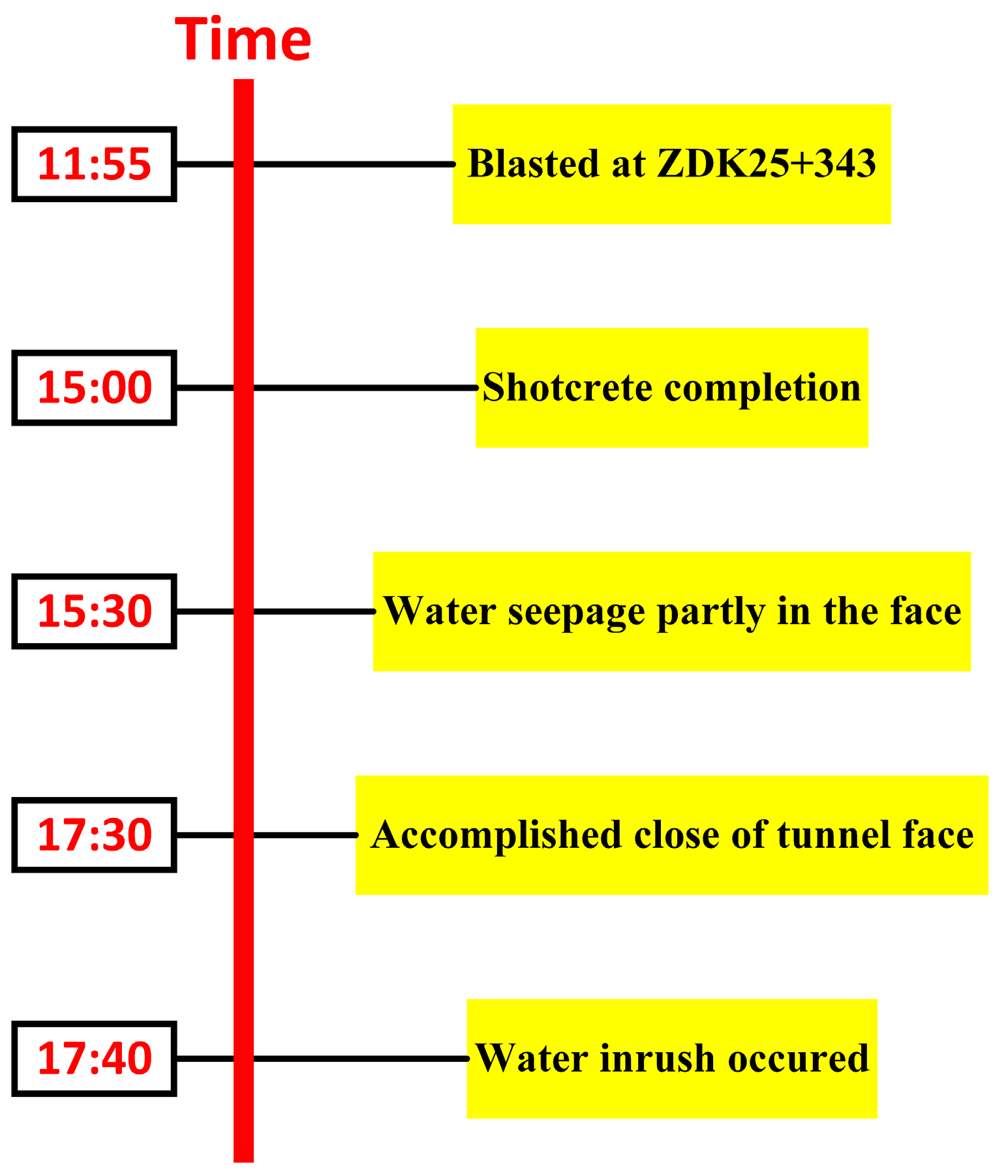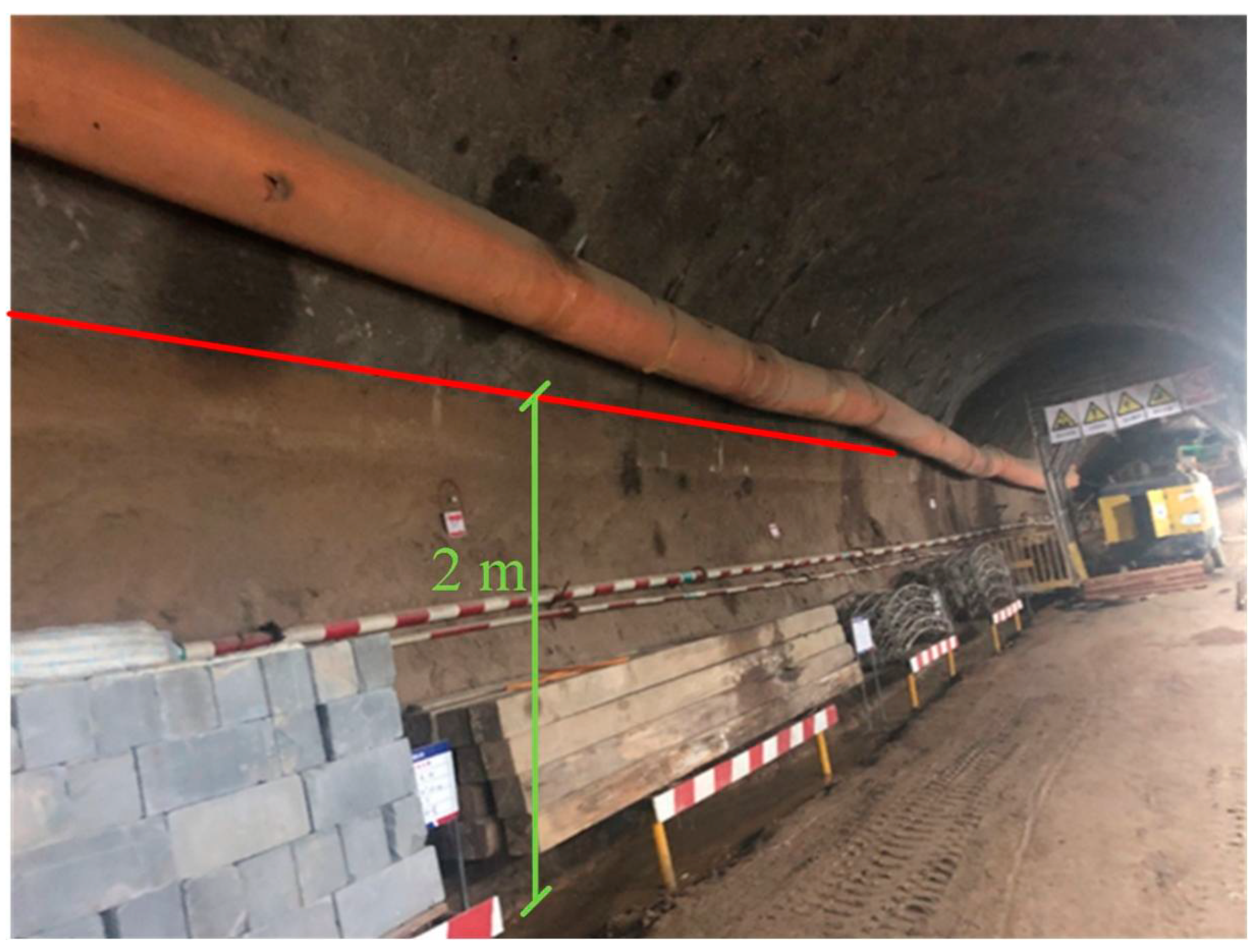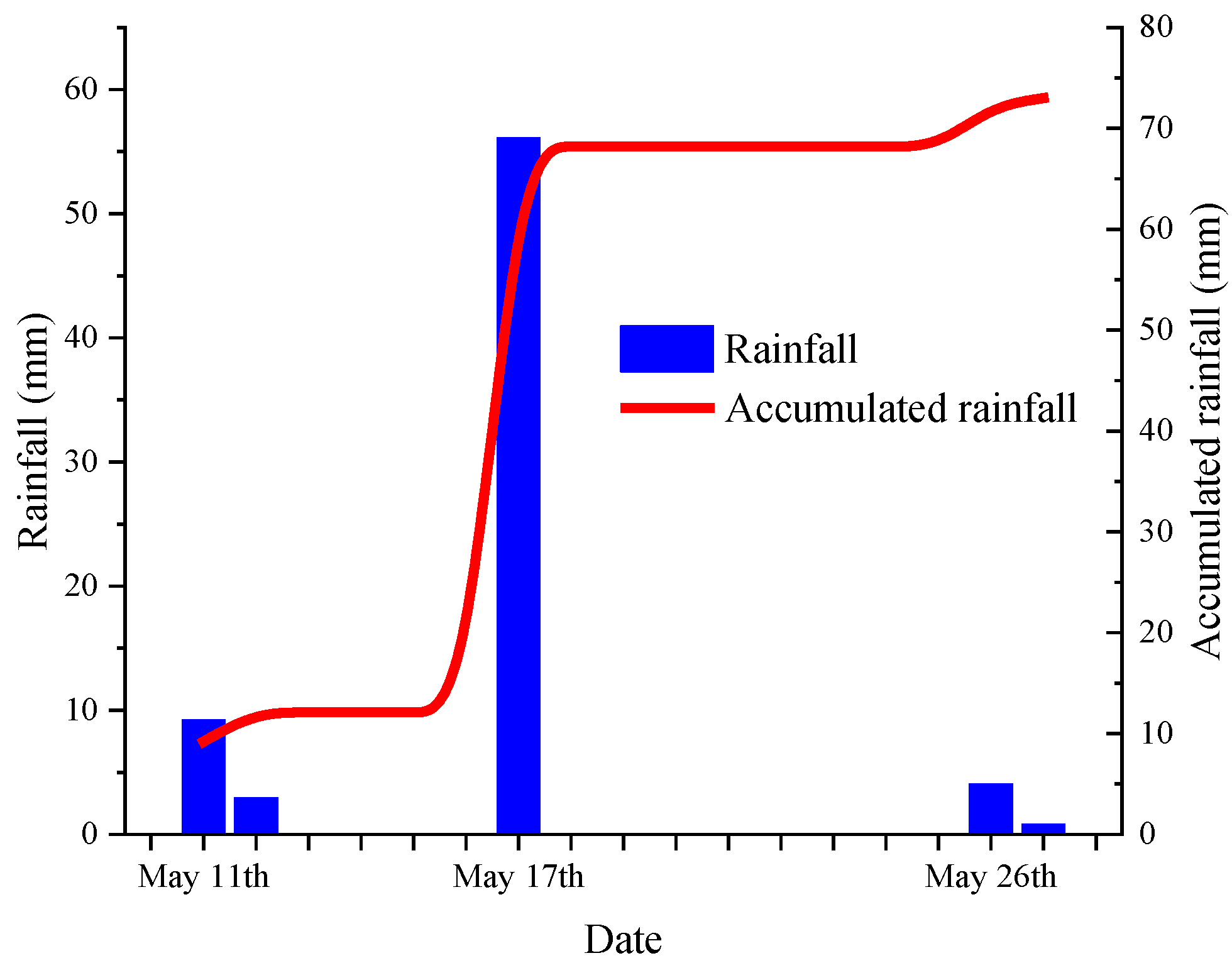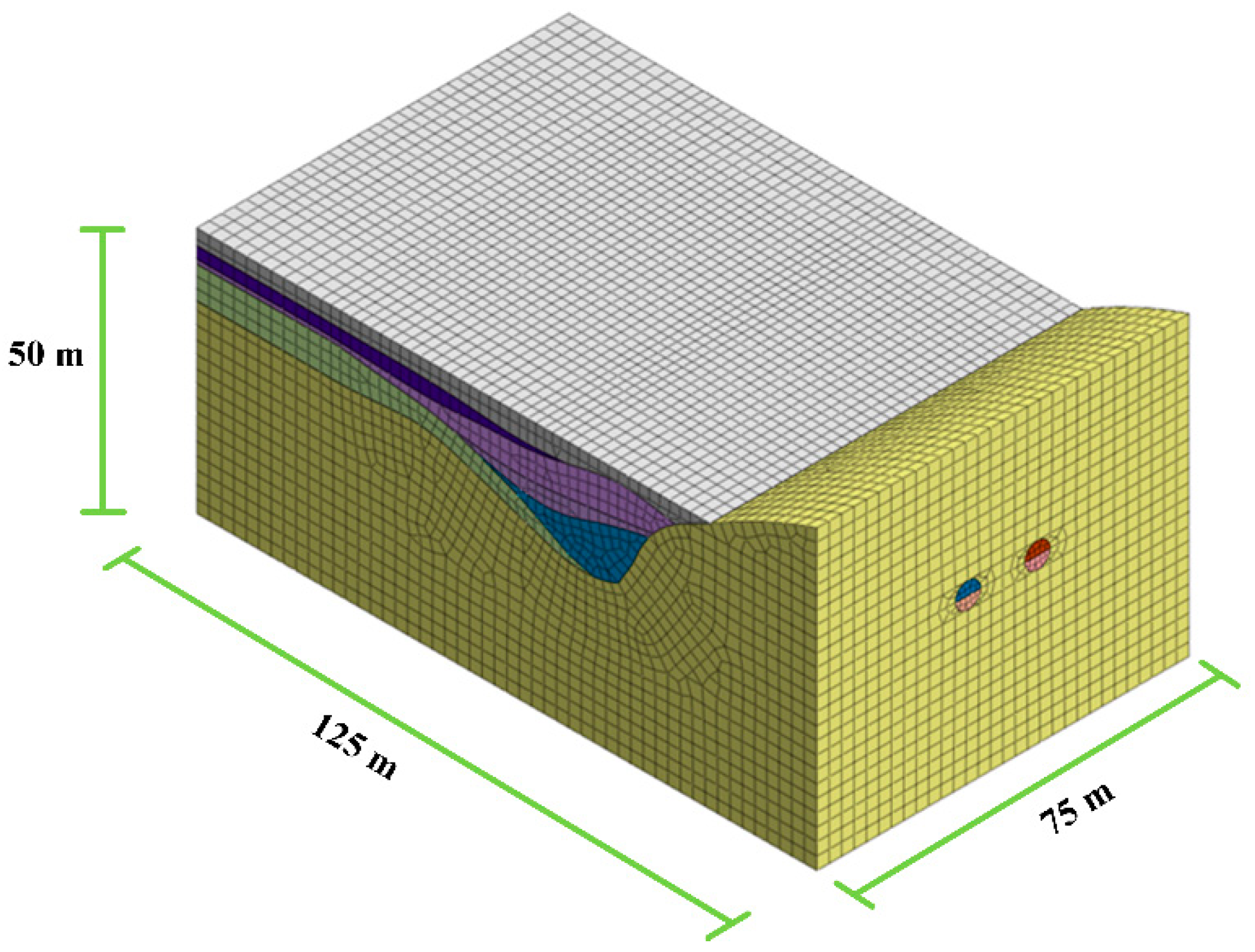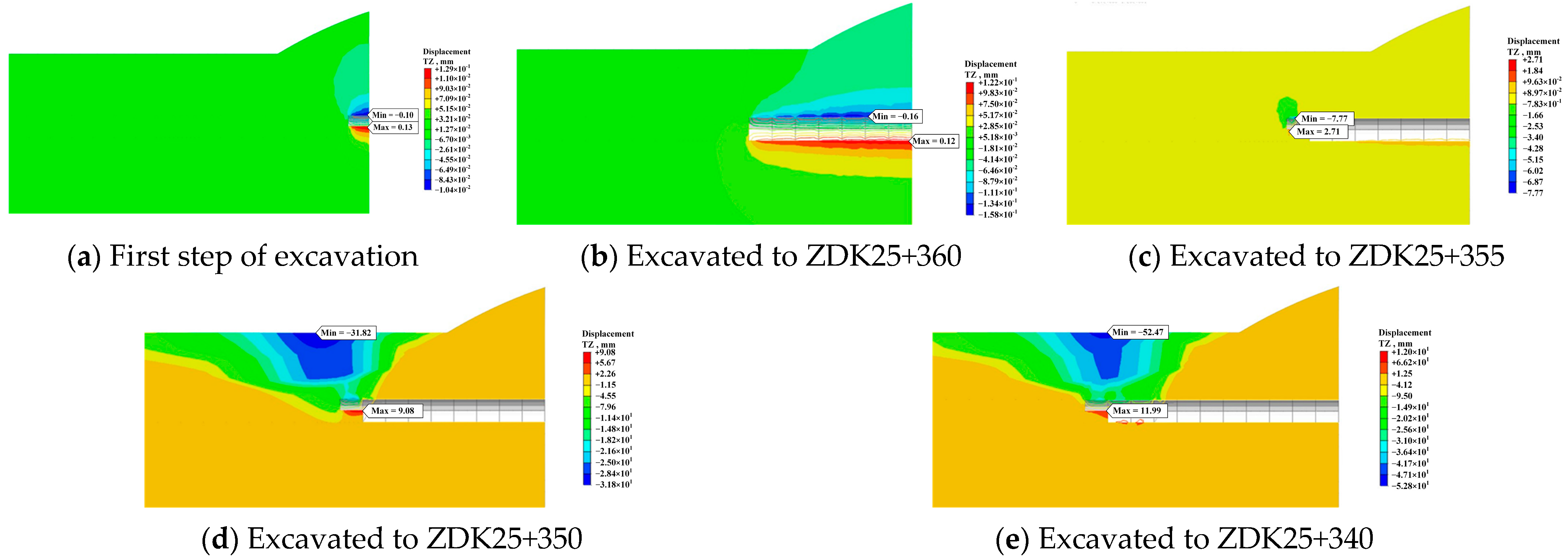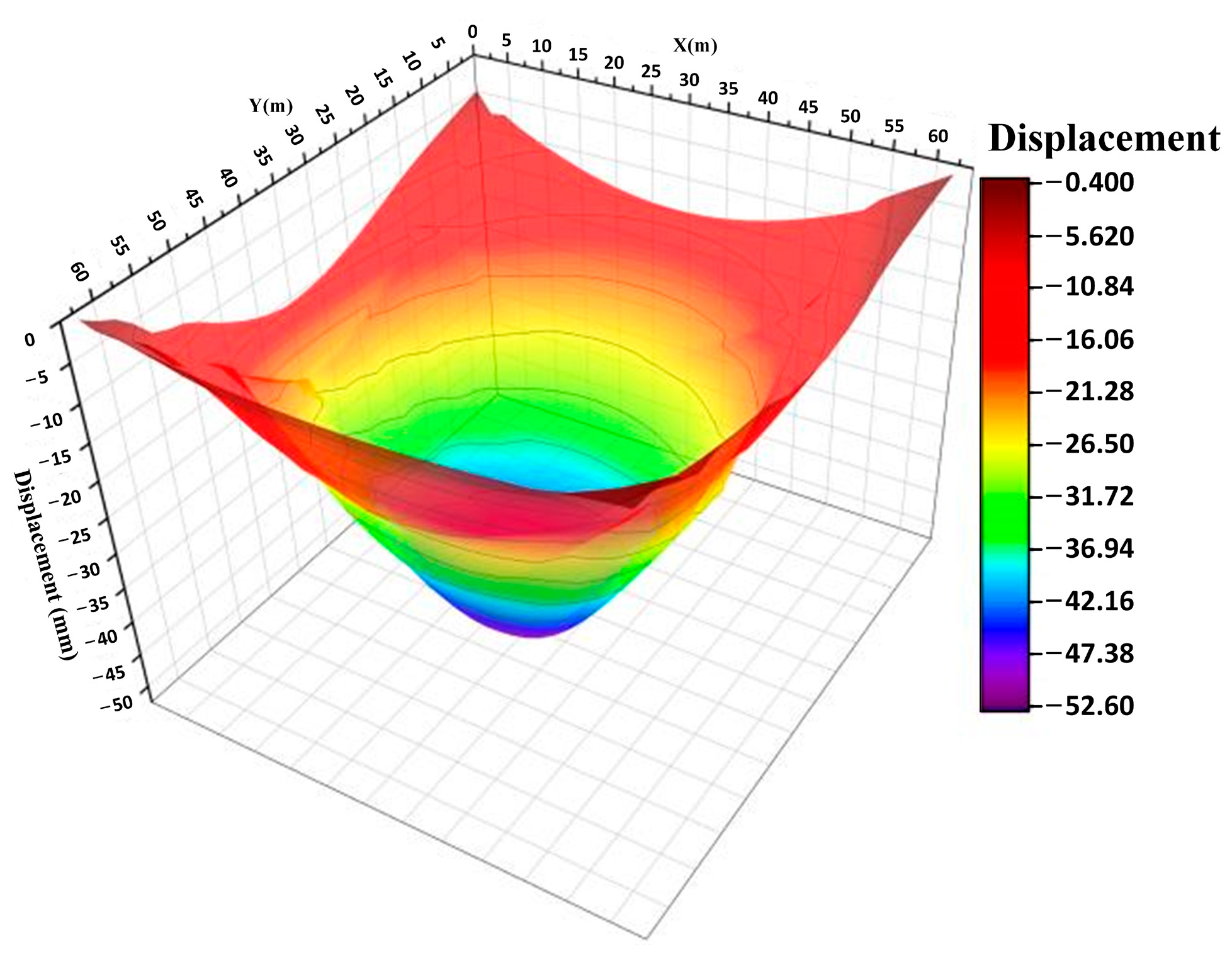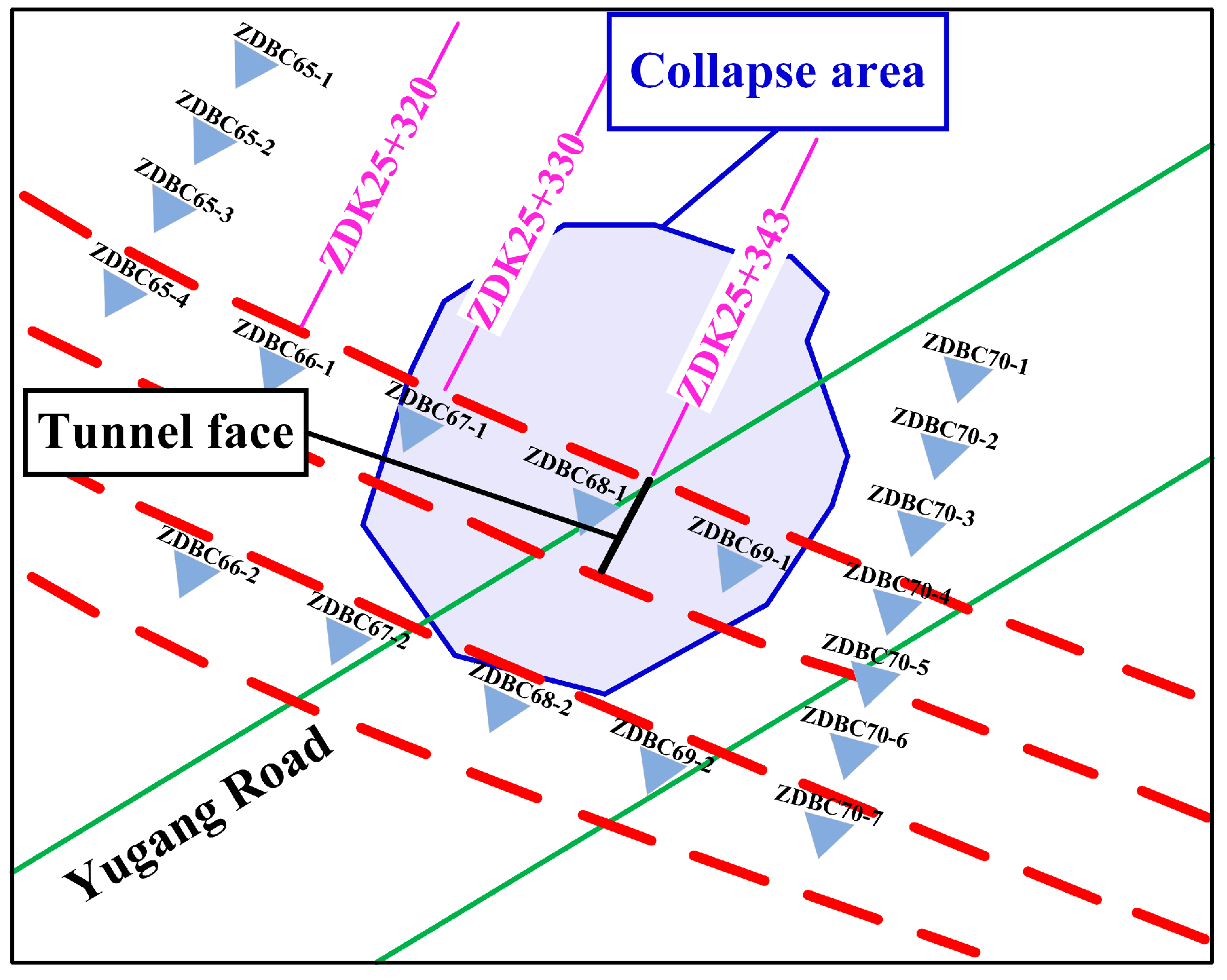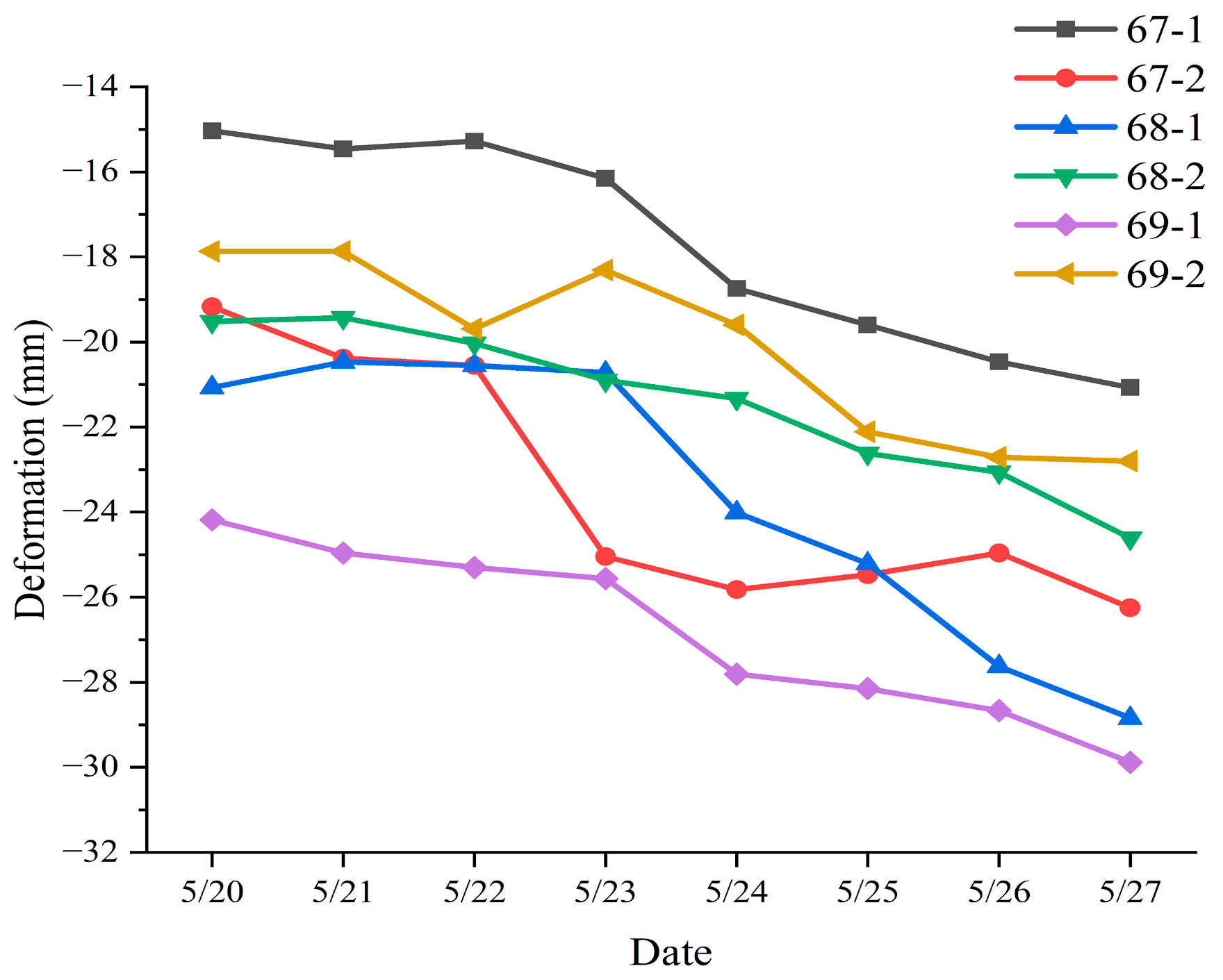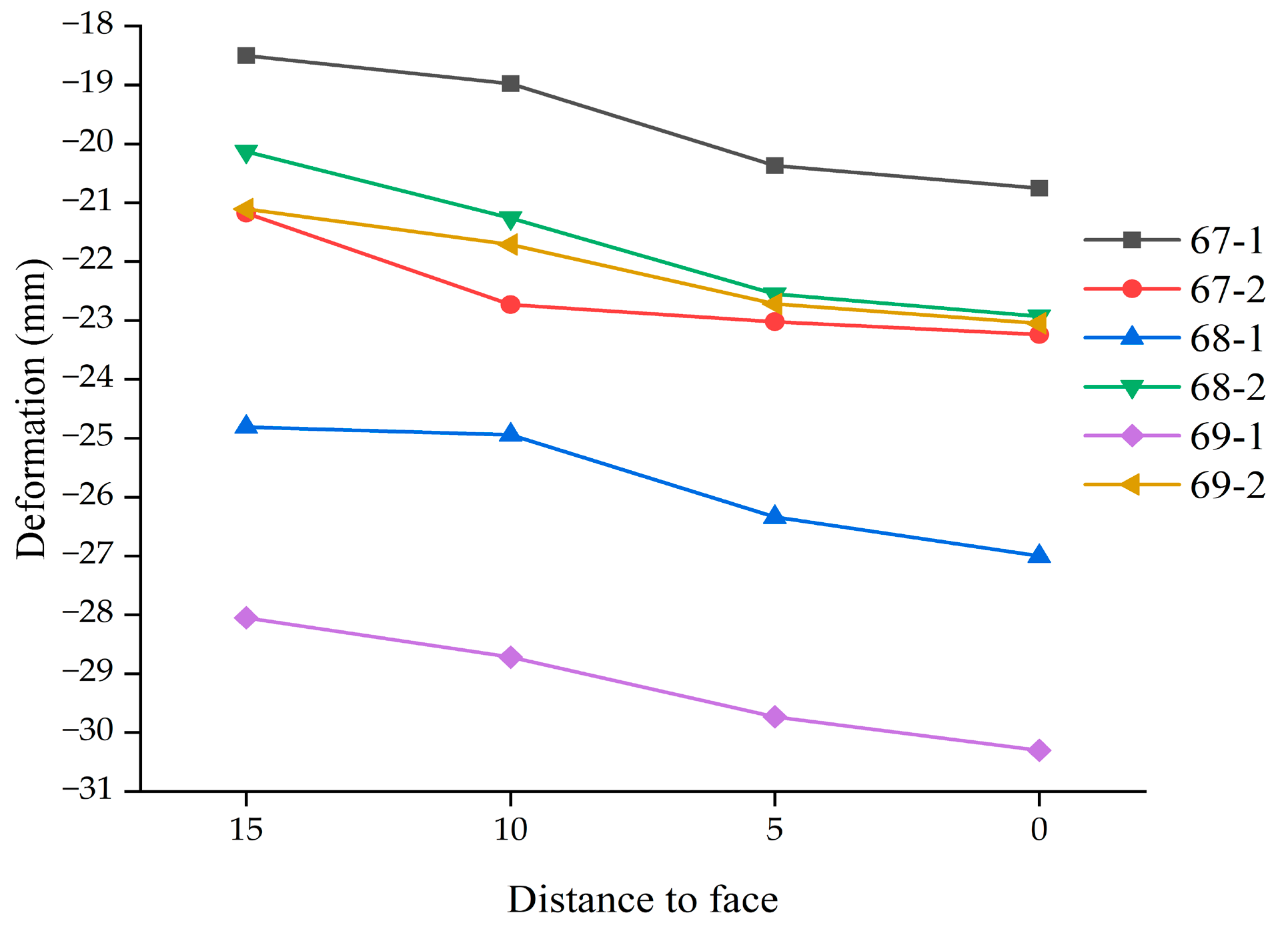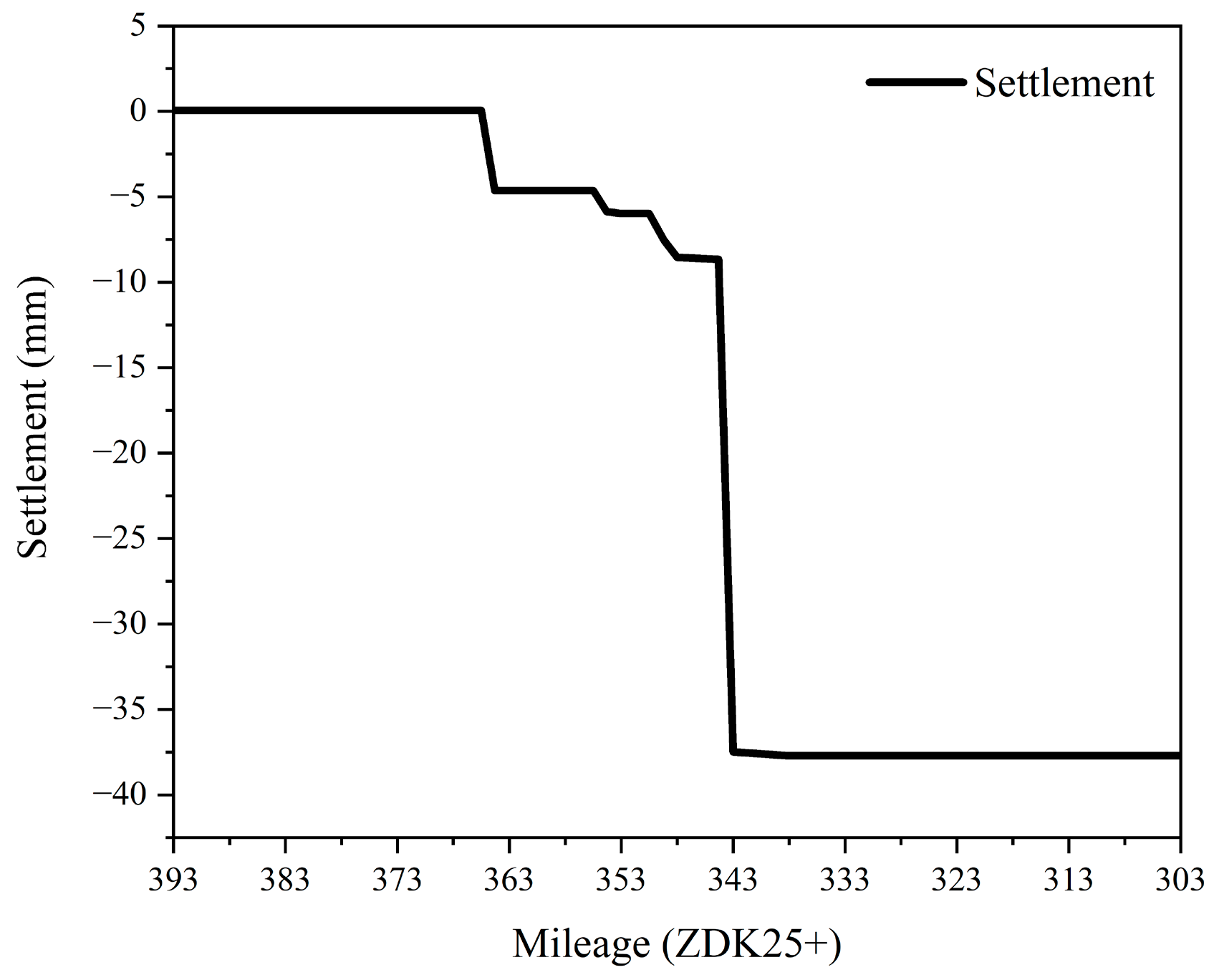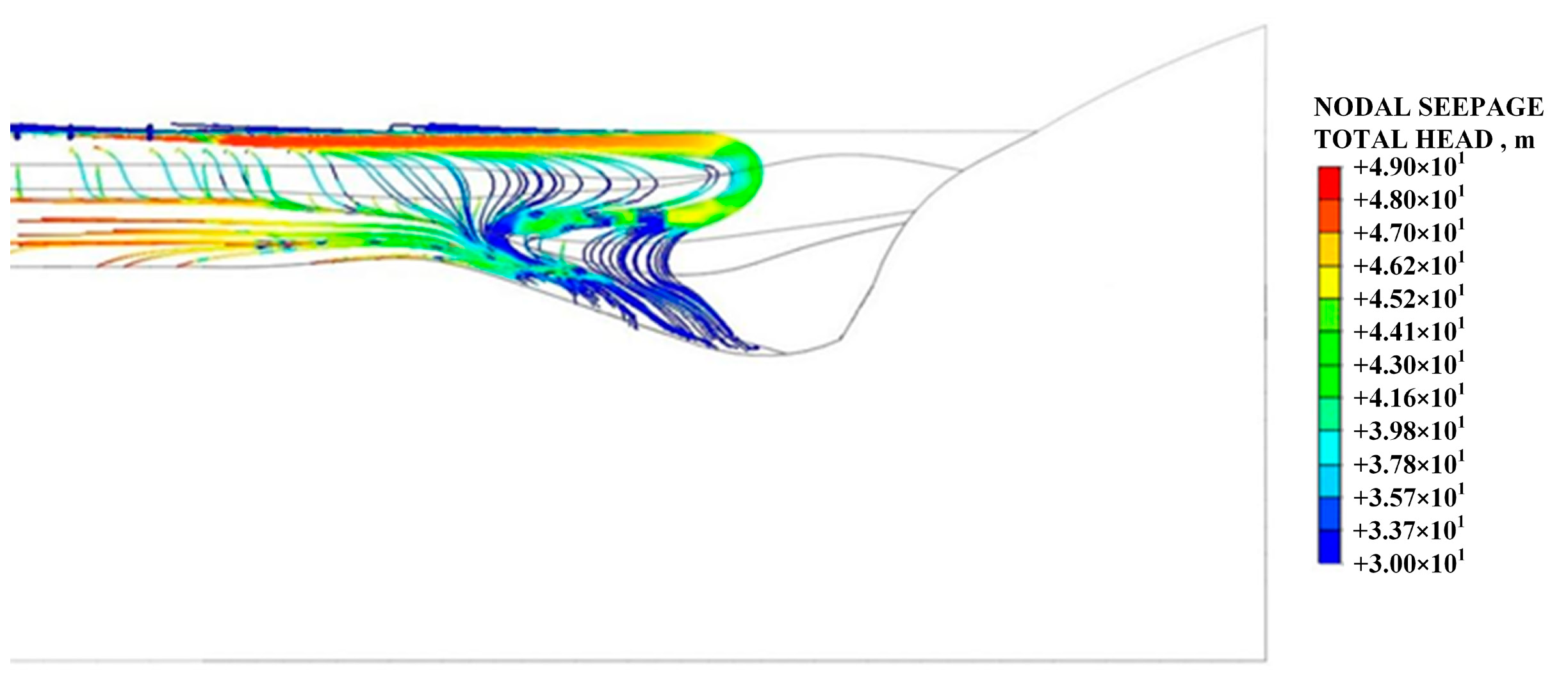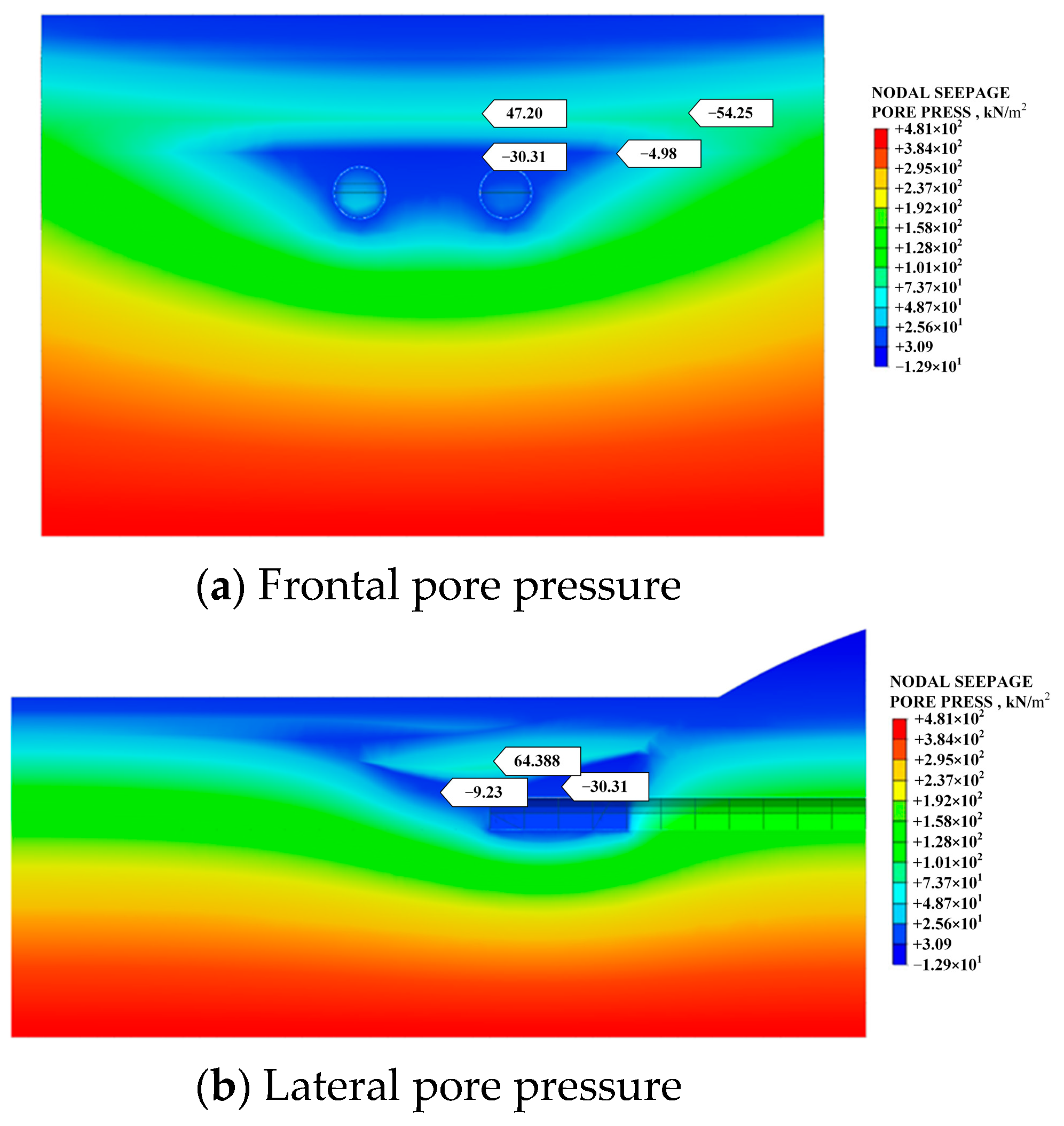1. Introduction
As metro construction increases, the pressure of urban surface transportation brought about by urban development and dense population has been greatly alleviated, and metro is the preferred transport mode of people [
1,
2]. According to statistics from the National Bureau of Statistics, 51 cities in China had opened metro lines by the end of 2021, with a total operating distance of 8736 km. However, water inrush disasters often occur due to geological and groundwater during metro tunnel construction [
3]. For example, on 6 May 2011, a water inrush accident occurred during the construction of Tianjin Metro Line 2, and caused the collapse of the road surface. Another example is that on 7 February 2018, in Foshan Metro Line 2, when a water inrush accident occurred and caused the tunnel and roadway to collapse. Water inrush disasters not only cause life and property loss, but also cause environmental problems such as surface collapse and groundwater loss [
4]. Therefore, reducing the occurrence of water inrush is of great significance for safe construction, property loss and environmental protection.
Various methods, such modeling experiments, numerical simulation and field tests have been adopted to explain the mechanism of water inrush. In terms of modeling experiments, various types of models with different sizes and conditions have been proposed to study the process of water inrush. For instance, Li et al. [
5] studied the stability of the surrounding rock using a true triaxial geological model test, revealed the internal connections between physical information such as displacement, stress and seepage pressure during tunnel excavation, and established the theoretical basis of the predicting of water inrush. Yang et al. [
6] proposed a 3D fluid-solid coupling model test to study the evolution process of water inrush caused by excavation and rainfall, and revealed the mechanism of water inrush. Zhou et al. [
7] carried out a seepage instability water inrush test of a karst pipeline to study the evolution process of the filling material seepage instability water inrush and analyzed the changes of surrounding rock displacement, stress, and seepage pressure during the water inrush process. Wang et al. [
8] developed a visual experimental system of particle migration to study the mass loss evolution of broken porous rock induced by seepage failure, and discussed the influence of grain gradation on particle migration. However, experimental research is restricted by models without real geological conditions, resulting in difficulty to truly deduce the evolution process of water inrush disaster in engineering. With the development of computers, scholars are addressing this problem using numerical models [
9,
10,
11,
12]. Li et al. [
13] studied the water inrush mechanism in faults of a harbour tunnel by physical and numerical models, and discussed the causality between crown displacement and hydraulic pressure. Jiang et al. [
14] revealed the mechanism of water sand inrush in water-rich sandy dolomite strata by a flow-solid coupling model, and analyzed the influence of different factors on the deformation value of the tunnel face. Fan et al. [
15] developed a numerical model combining the discontinuous deformation analysis method (DDA) and the smoothed particle hydrodynamics method (SPH) to clarify the water inrush mechanism and the critical thickness of a water-resistant rock mass in a jointed rock tunnel, and divided the process of water inrush into a mutation stage, a cataclysmic stage and a stable stage. Yan et al. [
16] studied the mechanism of the collapse of a funnel-shaped stratum through numerical simulation, and found that the essence of the collapse is the process of converting potential energy into kinetic energy. Huang et al. [
17] proposed a conceptual model which emphasized the evolution of fracture connectivity to investigate fluid flow through fractured rocks and study the water inrush mechanism, and discussed the influence of the connected fractures on water inflow. Although a numerical model can calculate problems at the engineering scale, results are deficient and ignore the heterogeneity of surrounding rocks. On-site monitoring can reflect the dynamic changes in excavation engineering and the working state of surrounding rock and support [
18,
19,
20]. Therefore, scholars have also striven to explain the water inrush mechanism based on on-site monitoring data such as surface deformation [
21], lining stress [
22], water inflow [
23,
24], and microseismic signals [
25]. Previous research has revealed the relationship between disasters and various factors [
26,
27,
28,
29] that play an important role in reducing the risk during excavation.
Water inrush risk assessment is an important tactic to reduce the occurrence of disaster. The study of tunneling risks started in the 1970s, and Guillermo-Federico [
30] first introduced the idea of risk assessment into the field of tunnelling in 1983. Nilsen et al. [
31] established a risk assessment structure chart and applied it to a cross-harbour tunnel, based on which Kampmann et al. [
32] further improved the risk assessment system and applied it to the metro. Multiple methods have been applied to water inrush risk assessment, including the analytic hierarchy process-AHP [
33], cloudy theory [
34], Bayesian network [
35,
36], neural network [
37], fuzzy theory [
38,
39,
40], and other mathematical models. Meanwhile, scholars have continuously improved the original method to obtain more accurate results. For instance, Kim et al. [
41] improved the analytic hierarchy process using the Delphi survey technique, and established a probabilistic tunnel collapse risk evaluation model. Aalianvari et al. [
42] proposed a risk evaluation model for water inrush combining the analytic hierarchy process and fuzzy Delphi method, helping to design a more suitable drainage system, drilling method, and support. Wang et al. [
43] applied an analytic hierarchy process and fuzzy theory and proposed an interval risk assessment method of water inflow and inrush in karst tunnel. The above-mentioned methods have been effective in reducing engineering risks.
Previous research on the mechanism and risk assessment methods of water inrush have been mostly focused on mountainous and karst areas, while there has been less research on water inrush in the upper soft and lower hard composite strata. Furthermore, for most of the above methods, for the selection of evaluation indexes is it has been difficult eliminate subjectivity. Hence, this study aimed to clarify the water inrush mechanism in composite strata by a case of water inrush and ground collapse in Qingdao Metro Line IV, and proposed a water inrush assessment method based on characteristics of composite strata. Frist, the case of water inrush and ground collapse is considered. Then, the disaster-causing factors of the water inrush were analyzed comprehensively, and the water inrush mechanism are discussed with respect to a numerical model. Finally, the water inrush risk of the tunnel is evaluated using the improved method. This study has value in reducing the occurrence of water inrush in a composite strata tunnel.
5. Conclusions
To investigate the disaster and clarify the causes of the disaster, a field survey and numerical simulation were conducted. A risk assessment method for tunnel water inrush was proposed to evaluate the risk. The main conclusions are as follows:
A funnel-shaped formation makes the groundwater converge towards the tunnel. The thickness of strongly weathered tuff at the tunnel vault in the collapsed area is only 0.7 m. At the same time, heavy rainfall increased the groundwater level and the water pressure. These geological conditions became the trigger factors of the accident.
This disaster was significant because of the poor surrounding rock and seepage pressure. When the tunnel was excavated from the slightly weathered area to the strongly weathered area, deformation increased abruptly. As the excavation proceeded, the excavation-affected area gradually expanded to the surface. The monitoring and simulation data showed that when the tunnel was excavated in the strongly weathered area, the surface settlement approached the warning value quickly. In addition, after the disaster, a negative pore water pressure zone formed around the tunnel, and increased the scope and scale of the accident as the water converged here.
A risk assessment index system for tunnel water inrush in Qingdao area is proposed. An improved RBF neural network was established by combining gray correlation analysis and a PAM clustering algorithm, and its reliability was verified. The water inrush risk level of the Jing-sha section was very high risk at level IV, which corresponds to the actual situation (water inrush). Making a proper risk assessment and taking the corresponding measures can effectively reduce engineering risks.
